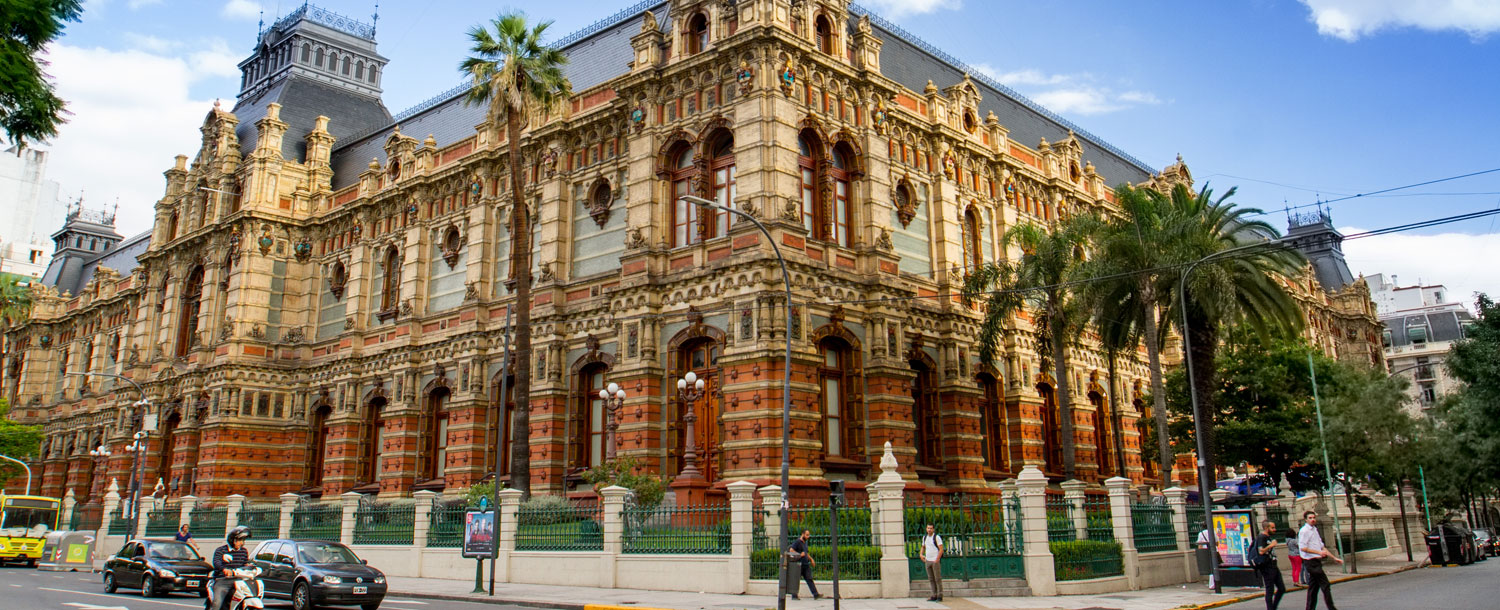1.00pm | Heading north
Present in tours
The Teatro Nacional Cervantes (Av. Córdoba 1155) was built in 1921 at the whim of Spanish actress María Guerrero. Craftsmen from all over Spain contributed to the construction, supplying Valencian tiles, furniture, paintings, mirrors and ironwork. The theatre suffered a fire in 1961 and was in restoration for many years.
Walk 7 blocks along Av. Córdoba, to the junction with Riobamba, to find a marvel of eclectic architecture and a symbol of the city's grandeur in a particular era: occupying an entire block and built from 170,000 ceramic tiles and 130,000 varnished bricks, the Palacio de Aguas Corrientes, was built to supply the city's drinking water. Despite its scale and grandeur, it was only in use for 16 years, until 1915.
After admiring the architecture of this unique building, go back a block and turn right into Av. Callao. At the junction with Lavalle (at Callao 450), look upwards and you'll find the Statue of Liberty (not that Statue of Liberty). Originally named Liberty Illuminating the World, the statute adorns the facade of the Domingo Faustino Sarmiento school. Liberty carries a book in one hand and a torch in the other.
Other options
Fans of tango or of fantastical painting might want to take a bus and head to the Carlos Gardel House Museum in Balvanera (Jean Jaurès 735), where the legendary singer lived the last years of his life with his mother, Bertha. In 2002, the house was converted into a museum to pay tribute to the singer. Six blocks from here is the Museo Xul Solar (Laprida 1212). More gallery house than museum house, this was the home of one of Argentina's most important avant garde artists.

